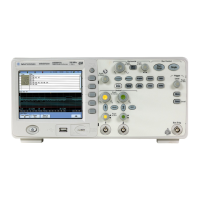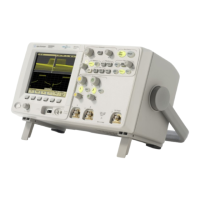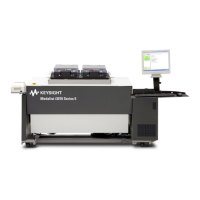Chapter 8 Ensuring Repeatability, Accuracy, and Resolution
Ensuring Accuracy
Getting Started Guide 8-3
8
You can think of repeatability in a similar way when making
measurements with the laser. Operator skill, machine stability, machine
geometry, and the environment all affect repeatability.
Accuracy is how closely the measurements agree to a given standard for
the measurement. (By comparison, repeatability is how closely the
measurements agree to each other.) In the sharpshooter example, the
closeness of the shots to the bull’s-eye is a measure of accuracy. It is
possible for the shots to be close together (repeatable), but far from the
bull’s-eye.
Machine tool accuracy is more complex than positioning accuracy at one
target. In linear positioning, accuracy is the difference between the
average position of a group of measurements and the location of the target
position for those measurements. Accurate parts are exactly like the
drawing for those parts; repeatable parts are exactly like each other. A
batch of parts, all rejected for the same flaw, are repeatable but not
accurate.
Resolution is the smallest increment of scale. In the sharpshooter
example, resolution is the distance between rings in the target.
In laser measurement, resolution is the smallest unit of measurement you
can make with confidence.
For discussion purposes, accuracy is presented first in this chapter,
followed by repeatability, and resolution.
Ensuring Accuracy
The accuracy and precision of a measurement are influenced by many
factors. Philosophies of how to quantify overall positioning accuracy vary
as shown by the multitude of standards. The Agilent 10747F Metrology
Software enables you to quantify overall accuracy to any current standard
or to the needs defined by your situation. (The results are often very
different.)
